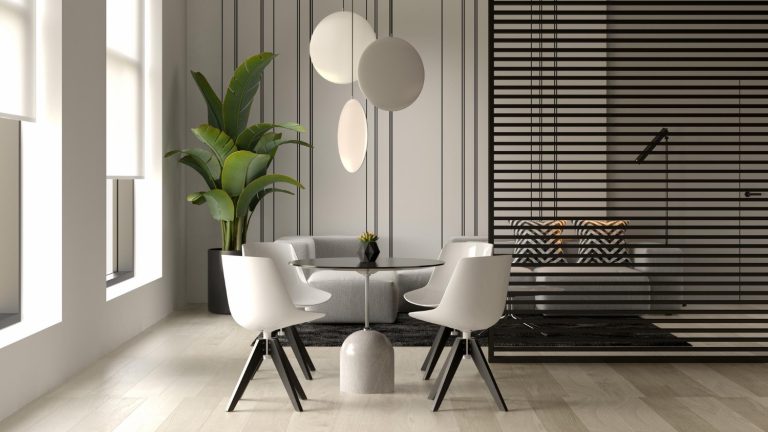Interior design has evolved dramatically over the past decade, with modern homeowners increasingly seeking furniture that combines aesthetic appeal with functional innovation. Today’s market offers an unprecedented variety of options, from minimalist Scandinavian pieces to bold contemporary designs that serve as conversation starters. Understanding how to navigate these choices can transform your living space from ordinary to extraordinary.
The evolution of contemporary furniture design
The modern furniture landscape reflects our changing lifestyles and values. Sustainability has become a driving force, with manufacturers prioritizing eco-friendly materials and production methods. Simultaneously, the rise of remote work has created demand for versatile pieces that seamlessly transition between professional and personal use.
Contemporary design emphasizes clean lines, geometric shapes, and multifunctional elements. This aesthetic philosophy stems from the belief that our living spaces should promote both visual harmony and practical efficiency. The result is furniture that doesn’t just fill a room but actively enhances the way we live and work within it.
Key trends shaping furniture choices in 2025
Organic shapes and curved designs
The stark minimalism of the 2010s has given way to softer, more organic forms. Curved sofas, rounded dining tables, and chairs with flowing silhouettes create inviting spaces that feel both modern and comfortable. These pieces add visual interest without overwhelming the room, making them ideal for various interior styles.
Mixed materials and textures
Today’s most striking furniture pieces combine unexpected materials. Wood meets metal, leather pairs with woven textiles, and glass elements add lightness to solid forms. This approach creates depth and visual intrigue while maintaining cohesive design principles.
Swivel and rotating functionality
Swivel chairs have transcended their office origins to become statement pieces in living rooms and dining areas. This functionality offers practical benefits in our increasingly flexible living arrangements, allowing furniture to adapt to different activities and social configurations throughout the day.
Choosing furniture for different spaces
Living room essentials
The living room serves as the heart of most homes, requiring furniture that balances comfort with style. Start with a quality sofa that reflects your aesthetic preferences while providing adequate seating. Consider the room’s traffic flow and choose pieces that enhance rather than obstruct movement.
Coffee tables and side tables should complement your seating while offering practical storage solutions. Modern designs often incorporate hidden compartments or innovative materials that add functionality without compromising style.
Dining room dynamics
Dining rooms present unique challenges, requiring furniture that facilitates both intimate family meals and larger gatherings. The dining table serves as the room’s anchor, but chairs play an equally important role in defining the space’s character.
Modern dining chairs combine ergonomic comfort with striking visual appeal. Look for pieces that offer proper back support while making a design statement. The height relationship between chairs and table is crucial – maintain approximately 12 inches of clearance for comfortable seating.
Home office integration
As remote work becomes permanent for many professionals, home offices require furniture that promotes productivity while maintaining aesthetic appeal. Desk chairs must prioritize ergonomics without sacrificing style, supporting proper posture during long work sessions.
Quality considerations and investment pieces
Construction and durability
Quality furniture represents a long-term investment in your home’s comfort and appearance. Examine construction details carefully – solid wood frames, reinforced joints, and quality hardware indicate pieces that will withstand daily use. Avoid furniture that relies heavily on particleboard or flimsy metal components.
Comfort and ergonomics
Comfort should never be sacrificed for style. Test furniture thoroughly before purchasing, paying attention to cushion firmness, back support, and overall proportions. Quality pieces maintain their comfort over time, while cheaper alternatives often lose their appeal after minimal use.
Maintenance and longevity
Consider the practical aspects of furniture ownership. Leather requires different care than fabric upholstery, while wood finishes need periodic maintenance. Choose pieces that align with your lifestyle and maintenance preferences to ensure they remain beautiful for years to come.
Creating cohesive interior designs
Successful interior design requires careful consideration of how individual pieces work together. Start with a clear vision of your desired aesthetic, then select furniture that supports this vision while meeting practical needs. Color palettes, material choices, and proportions should create harmony rather than competition.
Don’t feel obligated to match everything perfectly. Modern design celebrates thoughtful contrasts and unexpected combinations. A contemporary chair can enhance a traditional dining table, while vintage accessories can add character to sleek modern furniture.
International design influences
Global design trends continue to influence contemporary furniture, with European manufacturers leading innovation in both aesthetics and functionality. French design houses, in particular, have mastered the art of combining elegance with practicality, creating pieces that elevate any interior.
For those seeking exceptional contemporary furniture that embodies these design principles, Maestria Meubles offers a curated selection of premium pieces that transform ordinary spaces into extraordinary environments. Their collection showcases the perfect balance of form and function, with innovative designs like the ROCK chair and WHALE chair that demonstrate how modern furniture can serve as both functional seating and artistic statement pieces.
Choosing the right furniture requires patience, research, and a clear understanding of your personal style and practical needs. By focusing on quality, functionality, and aesthetic appeal, you can create a living space that not only looks beautiful but also enhances your daily life for years to come.


